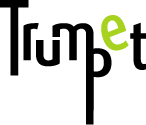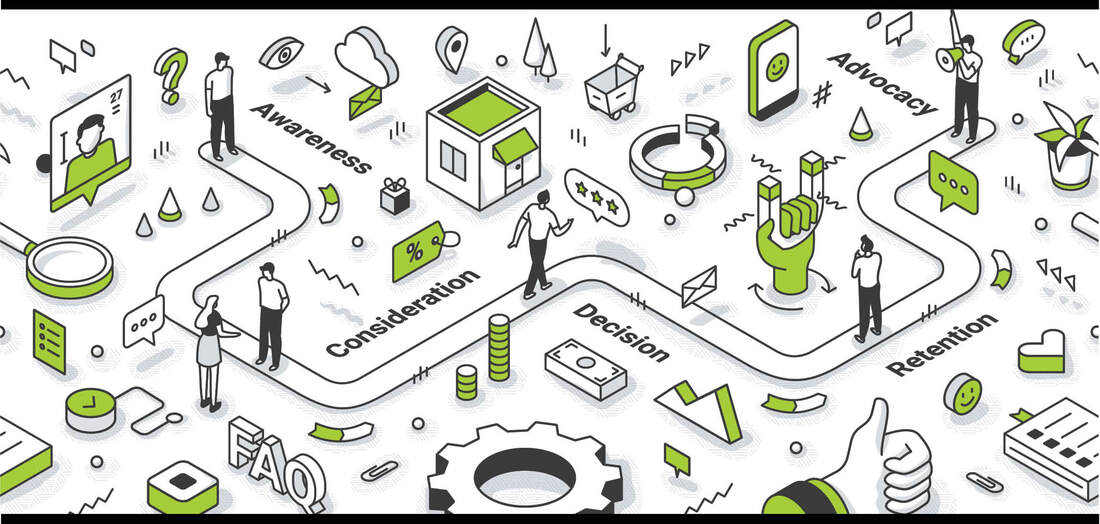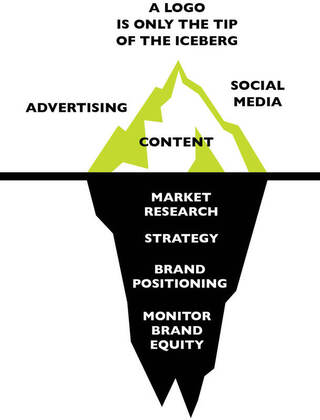 A brand is the perceived image of the product or service you sell. Branding is the strategy to create that image. In other words, brands are defined by customers. Branding is the promise you make to your customers. Make them the centrepiece of everything you do. What do people say, think, and feel about your business? The answers you get, the instant reaction someone has when your business is mentioned, that is your brand. All our daily decisions are driven by branding, from what products to use, to what services to avail of and to what organisations to get involved with. Everything from clothes and soaps to cities and charities, it’s all branded. The key to effective branding is that you must be what your brand says you are. You have to define what your business is about. A good example of a business who has managed to build consumer trust and emotional attachment is Lego. They’re not just building blocks for kids. They represent childhood imagination and creativity. An important part of branding is your visual identity. But this is only the tip of the iceberg. Branding is the strategy you put in place to form the impression people get about your business. Approach your communication by focusing on how you want your target audience to feel. You want to paint a clear picture of the exact position your brand intends to occupy in the mind of your target audience. Instead of telling them about features and benefits, you want to make an emotional connection with them. Half the challenge with building brands is getting into people’s heads and emotions help. Emotion is powerful. Positioning: Understand your market Finding out where your brand stands or where it doesn’t stand in the market, is the next step. You need to research everything there is to know about your business and the market in which it will compete. To find the correct position for your brand in order to be successful, you need to understand what people want, what you can offer, and what your competitors are offering. What problems do we solve? What makes us different? It is very important to differentiate between knowledge and assumptions. Do research by collecting the right kinds of data to conduct a fully realised diagnosis of your brand. Take time to interview decision makers. Get a group together for a brainstorming session, to define strengths, weaknesses, opportunities and threats (a SWOT analysis). Or, alternatively, work out where you are and where you could be in the future by making a list of these three things: The facts. The obstacles. The opportunities. This simple structure is of great help to identify key issues. Keep it focused, just one page. Look at all the possible ways your product or service solves problems for customers, both rationally and emotionally. Make sure the benefits you single out are genuine and tangible. The aim is to find that one meaningful thing that makes your business stand out from your competitors, (the USP, the unique selling proposition or oftentimes called value proposition). And you want to make that difference obvious and attractive. A main goal when branding your business is to differentiate from the competition. It can convince a customer to purchase from you over them. Look at what other businesses are doingCreate a comparison chart to view similarities and differences of the competition, side-by-side as shown here. Choose 2 to 4 competitors and answer these questions: Find a gap in the market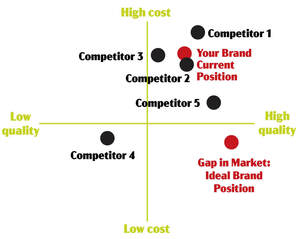 A simple way to go about this is to do a competitor brand audit, a one page map, as illustrated here. The purpose of this is to assess a brand’s strengths and weaknesses against the strengths and weaknesses of its competitors, and to identify where there might be a gap in the market. You should also have a look at other brands you aspire to. What are they doing that you admire? The most important task in building a brand is to get to know your audienceYou need to know who your customers are and how to reach them. What do they like and what do they dislike? You need to know their needs and motivators, as well as their overall profile. 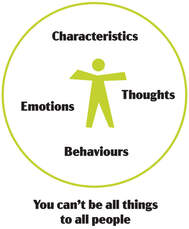 Defining your target market is critical to attracting buyers. Research both existing and prospective customers. Use surveys and/or focus groups and/or Google Analytics and/or in-person discussions to understand what your target market needs, why it is or isn’t buying from you, and what you can do to make your offering more appealing. Ask yourself what problems your product or service solves, and, in turn, to whom they appeal. Demographics such as age, gender, education level, occupation, and family situation can help you determine what your customers need and what they’re willing to spend. You should also consider who your customers are as people. What do they value? What is their lifestyle? What do they enjoy doing with their spare time? The answers to these questions can help you understand your target market on a deeper level. A buyer persona is a representation of your target customer. This is a creation of a character, with a name, job, income, interests, and responsibilities in line with your target market, with key considerations on why they need your products or service. It goes beyond basic demographics to include the intangible elements that make a person tick. 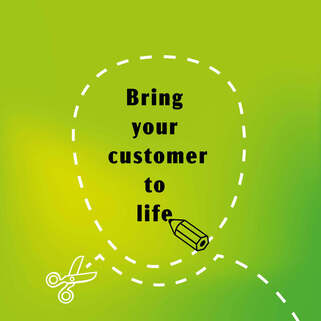 Think of your brand as a person, and create a persona for your ideal customer. Rather than describing a fiction persona try to describe a person you know instead. Or, if that doesn’t work, perhaps you can think of a famous person or a character from a film? Should this also fail, you can find a free stock photo of someone. What adjectives or words would you use to describe this persona? It’s much easier to connect with your audience when you have a specific reader in mind.
Envision that you are at a dinner party with your persona. Pay attention to how he or she behaves and talks. The most important things to nail down are your persona’s motivations and challenges, so that you can plan content that solves their issues. Put yourself in your customer persona’s shoes every time you create content for your marketing material. Use what you know to determine what channels you should be using to communicate with your persona and use his or her way of communicationg in the most natural and authentic way possible. If you are able to connect in a way that she or he believes, you will be able to create marketing campaigns that resonates. All of your customers are different so, unless you are able to give individual customers exactly what they want, you will need to have more than one customer persona. And there might be a new specific audience you wish to reach out to, whom you haven’t. Choosing who to target and who not to target is crucial. Make your brand a magnet that attracts the right customer. What your brand means to your customerYou have done a lot of research to get this far. You know what your competitors are doing, you know who your customers are and you have found a gap in the market. You know what you stand for. Now you want to write a short summary of your brand’s promise to your target audience. This summary is called a brand positioning statement and it answers the “why” you are different from the competition and the “why” customers should care. This is your chance to shine. To be truly effective, the statement should be comprised of one or two sentences that define: Your target audience: Who are they and what are their pain points? Your brand promise: How does your brand solve the problems (pain points) that your target audience has? In the eyes of your audience, what are the greatest benefits your brand offers? Your market: What is your market category? How does your brand better relate to your target audience, in comparison to your competition? Your evidence: The reason why your brand will deliver on this promise. Whatever the reason, there has to be something backing up your claim. One thing that truly helps a brand stand out among competitors is expertise. Showing a strong authority on subjects makes it easier for a customer to choose your brand. Here’s a brand positioning statement formula that might work for you: We help [target audience] Who [challenge / pain-point] To achieve/experience [key benefit] Unlike [competitive alternative] Our solution [unique point of difference] I also quite like this simple formula by Steve Blank: We help (X) do (Y) by doing (Z). I help SMEs to resonate with their target audiences by designing visual communication. Your brand proposition statement will be the greatest guide for your efforts going forward. It is a simple summary of why a customer would choose your product or service. It communicates the clearest benefit that customers receive by giving you their business. Every value proposition should speak to a customer’s challenge and make the case for your company as the problem-solver. You want to paint a clear picture of the exact position your brand intends to occupy in the mind of your target audience. Edit, revise. Be as thorough and as on-brand as possible. It is worth spending time refining your proposition statement to ensure it is saying something truly distinctive. You might also want to define your mission, vision and value statement. A mission statement lets the public know the product or service your business provides, how it does it, and who it does it for. A vision statement is a declaration of where your company wants to be in the future. It clearly articulates the hopes, dreams, and aspirations of a brand. Your values (often referred to as your company culture) let people know that you will act morally and ethically on your way to success. Your brand purpose is your North Star. Sharing what you stand for will give your brand meaning and added value. However, you want to be 100% sure that your company really wants to do things differently. You have to stay true to the promise you make. Brand managementBrands are on the world stage 24/7. All your brand touchpoints need to be branded to give the same look and feel. You want your customer’s buying process to come across as a seamless experience. Consumers don’t care about brands as much as we think they do. Pulsing brand assets through your advertising and repeating your brand assets over time are critical. You need your brand to stand out with a consistent logo, look and feel. This is how to build an association with people’s memories, so that if they shop your category, they will think of your brand. Much internal and external work goes into shaping what customers perceive. Brand management is the planning and maintenance of everything that goes into defining your brand. It is a marathon, not a sprint. Touchpoints are the point of contact or interaction between a company and its customers. Here’s a list of brand touch points that needs to be managed:
To ensure that you are educating your customers you need to evaluate each conceivable touchpoint to see what the customer will encounter. Use branding to tell a consistent story, but vary the format to adapt to the unique requirements of each touchpoint/channel. This is called omnichannel marketing. The customer journey/client experienceThe customer journey is the decision-making process someone goes through to buy something. It is a detailed outline of every step a person takes to become a paying customer. The starting point for this process is unique to each consumer which is where a customer journey map comes in handy. Mapping out your customer journey involves looking at all the information customers need and it helps you answer important questions, like:
With the help of a customer journey map, you’ll get a better understanding of what will motivate your customers to become paying, and (if done right) loyal, customers. Shoppers are looking for magic moments. Here’s the 5 stages of the customer journey: Build magic experiences for your customersAwareness At this first stage of the customer journey, customers decide they have a problem and begin to look at solutions. These prospective buyers might not know anything about you. It’s your responsibility to educate them on what you do and how you do it. The goal is to build more interest in your brand and show prospects how you can help them. Prospects in this group find your business through a variety of sources such as search engines, social media, ads or word-of-mouth. Consideration At the second stage, customers want to narrow the field to those products or services that meet their initial criteria. They look at websites, blogs and product pages to compare products and services. Decision Here they look at reviews and customer ratings and decide among their options to buy from you. At this stage it is important that you create as few barriers as possible. For example, a simple checkout process plays an important role. Or a quickly accessible information form. Retention During this stage, you want your customers to feel satisfied. This is where you provide customer support to ensure the customers that they made the right decision. Perhaps you can create a forum or a webinar or an event. Or you might email the customer with information on new products, features or benefits. Loyalty (and if done right, advocacy) The customer continues to use your brand and communicates with you regularly about its value. The aim is for your customer to become a brand advocate, by recommending your brand to others. Implementation: Get your team on board  Engaged employees are the lifeblood of every successful business. They speak positively about your company to each other, to potential employees, and to your customers. Every person who works for your business, they are all ambassadors for your brand. You want them all to be engaged, hence the importance of getting your new branding understood internally. In order for your employees to embrace the new branding, and to buy-in, they need to be taken on the branding journey so they can understand what’s expected of them. To involve staff in the process you might arrange a staff workshop. Take each agreed value and then discuss how that value effects their day-to-day lives. A brand that does this well is Starbucks. Regardless of which Starbucks you visit, anywhere in the world, your experience will seem similar. This is beacuse their employees go through a rigourous training program to insure that what they value is translated into how they behave. For the visual aspect we have the branding guidelines and workshops can be held to discuss its usage. The branding guidelines should also include a tone of voice. This captures how your brand communicates. It might sound strange, but guidelines on ‘how to speak’ is incredibly helpful as we are all different people and what comes naturally to some will likely feel not-so-natural to others. Ideally, the pictures and words work in harmony. There’s power in a great launch, to get your team exited. However, employees come and go, so it’s important to maintain on-going training. You want to make sure interested employees can always get the information they need to be more involved. You want them all to be proud to play their part, and motivated to see your business succeed. Take it to the publicThe greatest strategic idea or the worlds finest symbol will fail if it isn’t seen, heard or understood.  Putting your branding into action is vital and choosing your promotional channels is as important as the message itself. You can have a powerful brand message, but if potential customers don’t see it, it has no effect. Your brand message isn’t compelling unless the right people hear it. A combination of promotional channels create the media mix that is used to promote your brand:
Approach your communication by focusing on how your brand makes your target audience feel. Instead of telling them about features and benefits, you want to make an emotional connection with them. Decide on the right channels. Decide on where and when to promote. And get your message out on a consistent basis. Repetition reinforces recognition. Your branding is not your marketing. When your brand and your branding are brought together with strategy, purpose and creativity, that’s your marketing. Integrate the 4 Ps strategies (Product, Price, Place, Promotion) into a marketing mix to ensure you have a visible, in-demand product or service that is competitively priced and promoted to your specific target market. The aim of marketing is to know and understand the customer so well the product or service fits him and sells itself. Peter Drucker Measure your brands successIt is essential to continually monitor your brand equity so that you focus on potential business opportunities and perceived weaknesses. Measuring your brand performance should lead to targeting areas where you can improve. Attention to vulnerabilities as they arise prevents you from losing too much ground before you realise it. Measuring your brand performance includes evaluating internal brand behavior (such as employee satisfaction and positive brand engagement) and external perception (such as social mentions, positive press coverage and increases in sales). It also includes evaluating your overall business performance toward your goals. KPIs (key performance indicators) tell you if you are meeting your goals. From a brand perspective, your focus should be on:
The abundance of online data available from every channel is a blessing and a curse. If you’re set up to capture the right data, you can uncover valuable insights. If you’re not, it’s just a waste of time and effort. Decide what you need to measure and focus on your main business goals. The quickest way to devalue your brand equity is to act in ways that are counter to your values. Brand equity is built over a long time but can be destroyed in an instant. Branding is a mindset that requires a holistic approach that can’t be owned by any one department. Growing and maintaining a brand is the foundation of a business. You are not only investing in design. You are also investing in maintaining a culture. Comments are closed.
|
Browse the categories below to read about all things branding.
All
|
- About
-
Portfolio
- Wicklows Historic Gaol
- INDI and NNA
- ONMSD
- HSE
- NU
- Dún Laoghaire-Rahdown County Council
- PacSana
- Saint John of God
- Origina
- End of Life Ireland
- Yes Dynamic
- Park Pets
- Matt Jones
- TEDx
- Naturally Cordial
- Flanagan Kerins
- HSCPA
- Wilfield
- Mandals Advokatene
- Gourmet Chef
- Dalkey Tidy Town
- Tax Advice
- Association Innovation
- 360me
- McKeon Homes
- Clinical Leadership Competency Framework
- Blue Rock Environmental
- Testimonials
- Contact
- BLOG
